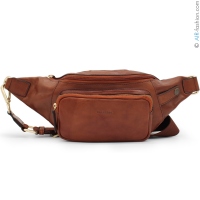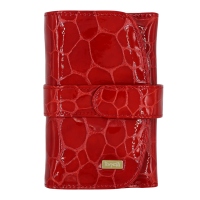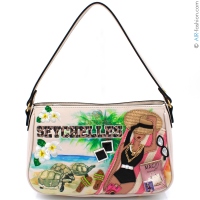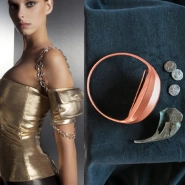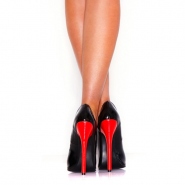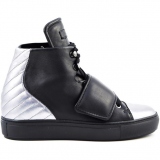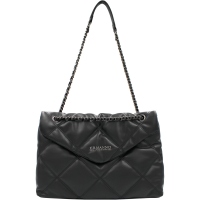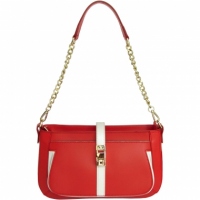Before it became fashion
Picture the 1970s: the streets of London, Manchester and Birmingham. Young people face economic crisis, disillusionment and boredom — and they protest. That is how punk rock emerged: essentially a rebellion expressed through clothing and appearance.
Ripped jeans, leather jackets, safety pins, vivid hair, bold slogans on T-shirts — it wasn’t just fashion; it was a challenge to society. Punks refused to conform, and their look became a manifesto against convention and the system.

In the late ’70s and early ’80s, from the ashes of punk, goth arose — darker, more dramatic and mystical. Black blazers, lace shirts, heavy boots, pale make-up, thick eyeliner. Youth gathered in legendary clubs such as the Batcave in Soho (opened in 1982), where Bauhaus, The Cure, Siouxsie and the Banshees played.

This style blended philosophy, art, poetry and a sombre beauty. For society at the time it was a shock: reactions were strong — some admired the freedom of expression, others called it “moral decline”. Yet that cultural explosion changed fashion forever.
John Richmond and the poetry of dark rock
Against this backdrop, John Richmond shaped his path — a young man with long hair and a sharp gaze, raised on the streets of Manchester. Those streets were filled with music: David Bowie, Marc Bolan, Sex Pistols, Roxy Music, punk, new wave.
These sounds inspired him and gradually turned into his own language of style, his grammar of design.

In the 1980s he chose to become a designer, enrolling at Kingston University in London — a city that gave him a stage where fashion and music intertwined. In that creative ferment his signature emerged: black leather, metal studs, chains, substantial accessories, skinny denim, printed tees, provocative slogans like “Destroy, Disorientate, Disorder” or “Eat Cake” — symbols of his rebellious aesthetic.

In 1984 he left London for Milan, where in 1987 he launched his eponymous brand, alongside lines such as Richmond Denim and Richmond X — different expressions of a single soul: refined, punk, urban.

His style became a recognisable signature: the scent of leather and a rock spirit embedded in every piece. Music icons — Madonna, David Bowie, Mick Jagger — wore his creations, sealing an indissoluble bond between music, fashion and rebellion.

His personal image also stood out: a “pale face and long ’80s hair” — a look he not only designed but embodied, a living manifesto of his aesthetic.

In the 2000s, under the management of Saverio Moschillo, the brand expanded rapidly: boutiques opened in Milan, Paris, Düsseldorf, London and New York. Milan runway shows and bold street campaigns cemented the rich chic aesthetic — at once luxurious, daring and expressive.

Brand revival after 2016
After a period of quiet and internal changes, the brand experienced a new renaissance. In 2017, with new investors (Blue Skye — lead investor) and partners (Arav Fashion — the Italian company handling production and distribution), John Richmond was relaunched with a renewed vision while preserving its rebellious DNA.

He returned to London, where it all began, and presented a collection full of punk and gothic references, interpreted in contemporary luxury. Lines became cleaner, silhouettes more architectural, yet the signatures remained: black leather, bold hardware, audacious branding and a sense of freedom.
John Richmond leather bags
Inspired by this reappraisal, the brand introduced a new line of leather bags, entirely Made in Italy. These accessories combine Italian quality and craftsmanship with a rock-goth aesthetic: studs, chains, black lacquered surfaces, a bold logo — all in the Richmond spirit.
The bags became a natural continuation of the brand’s story, fusing music, style and art.

Conclusion
The story of John Richmond is more than a designer’s path; it’s the tale of a culture and a generation that chose to defy rules. His style is a blend of punk, goth, dark and rock, reinterpreted through contemporary trends.
Today the brand lives a new life: creating clothing and accessories, Richmond remains true to his philosophy — break the mould, provoke and inspire. Every piece by the English designer carries a spirit of freedom, energy and defiance born in the clubs and streets of 1970s–80s Britain.






 Online Shop
Online Shop
 Terms and Conditions
Terms and Conditions
 Payments
Payments
 Feedback
Feedback
 Customer Support and Contacts
Customer Support and Contacts
 Discounts
Discounts
 Worldwide customs duties
Worldwide customs duties


 English
English
 Русский
Русский
 Deutsch
Deutsch
 Español
Español
 Français
Français

 +39
+39 info@air-fashion.com
info@air-fashion.com  Enter
Enter


